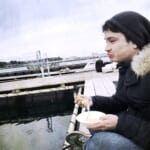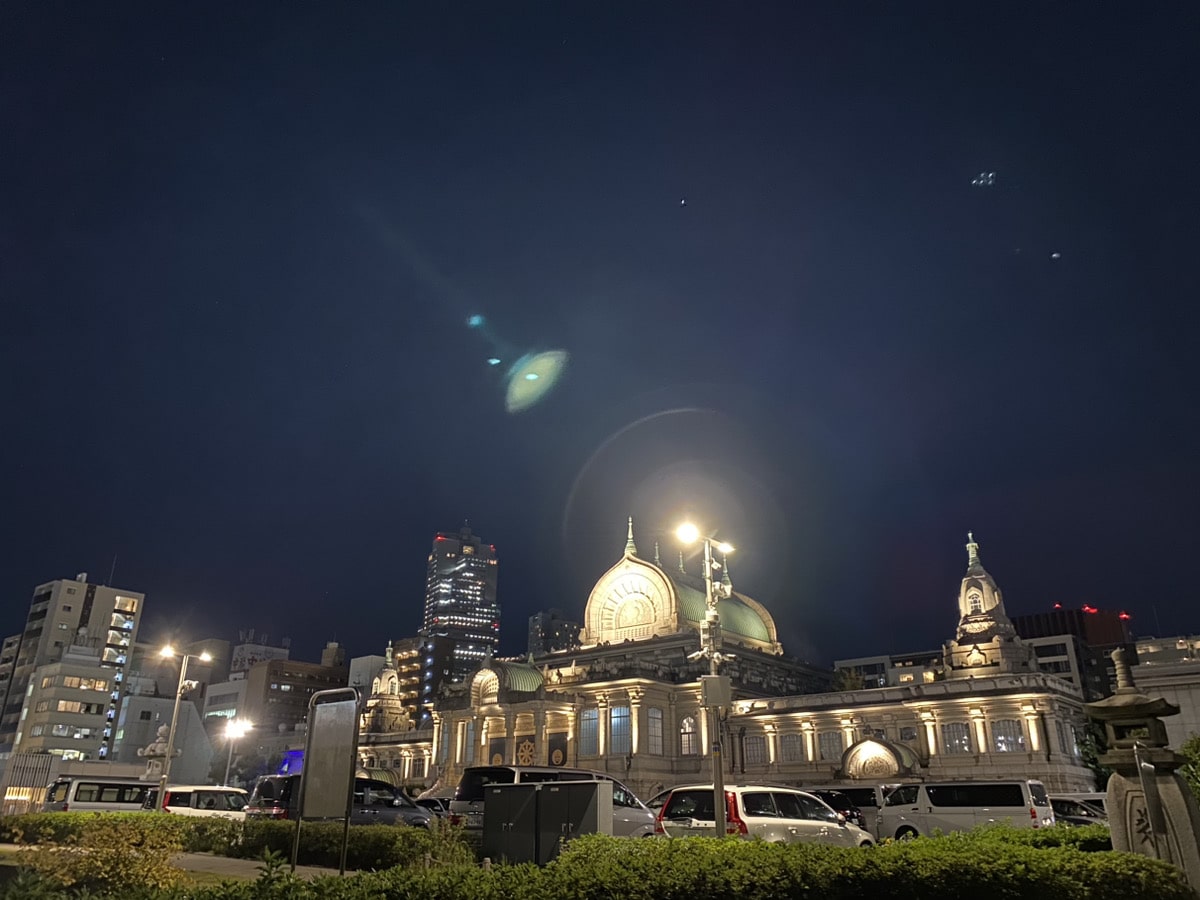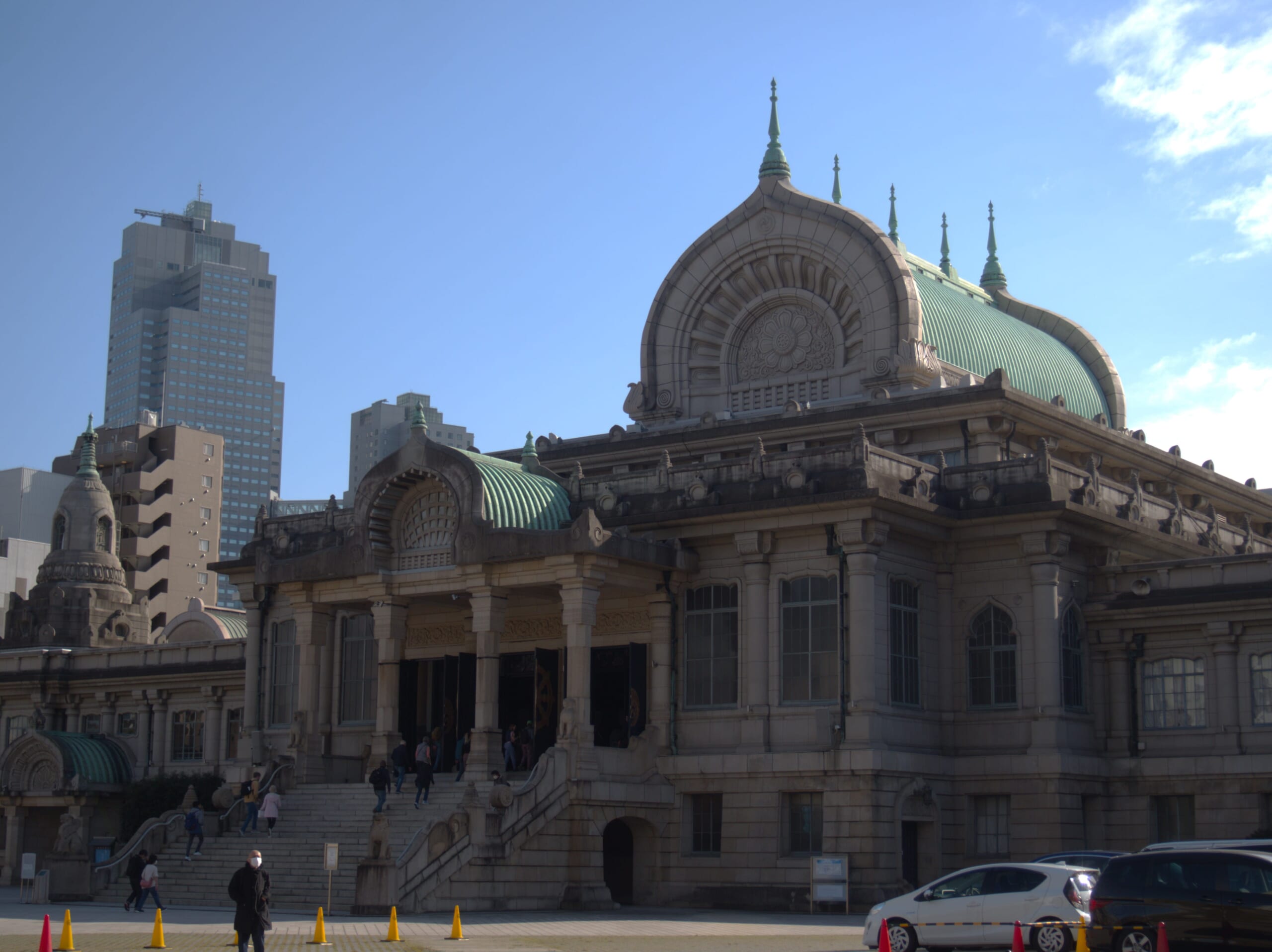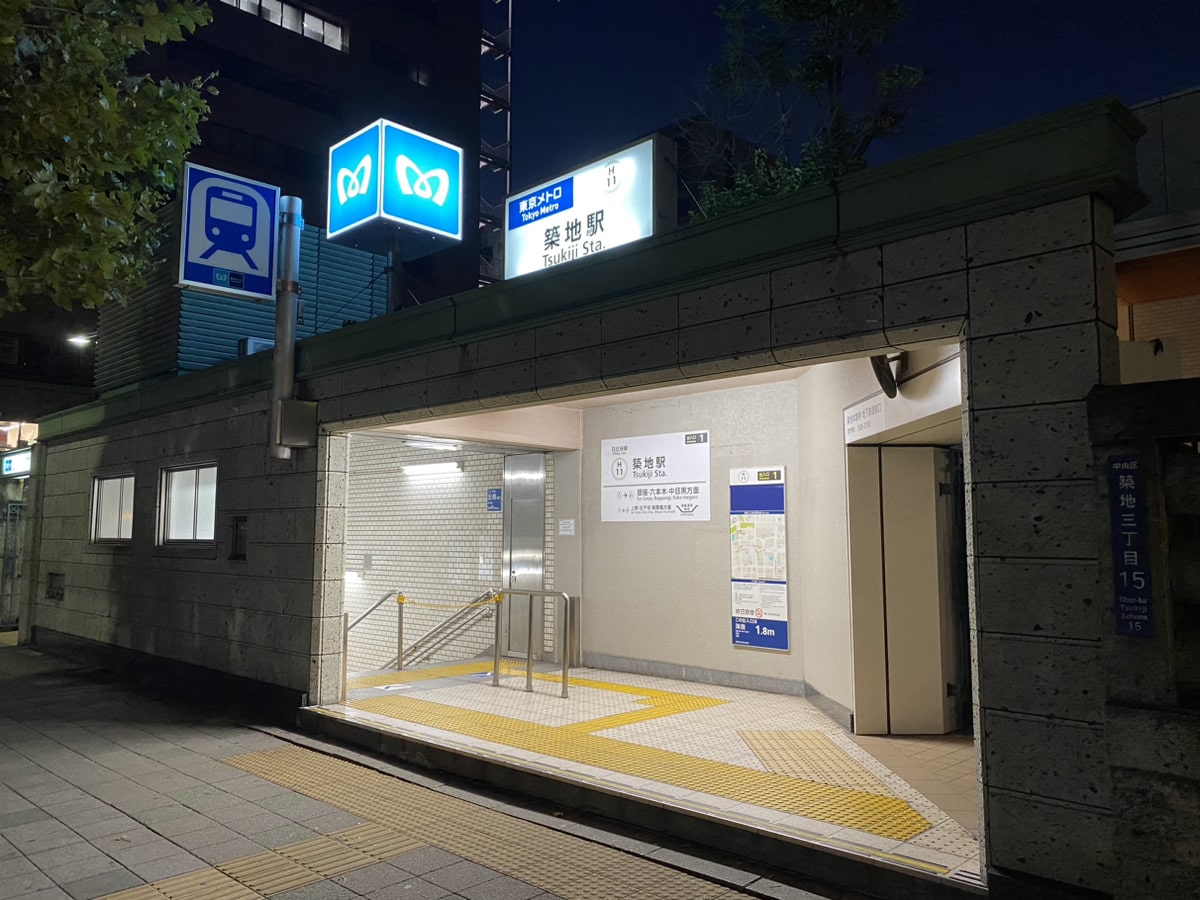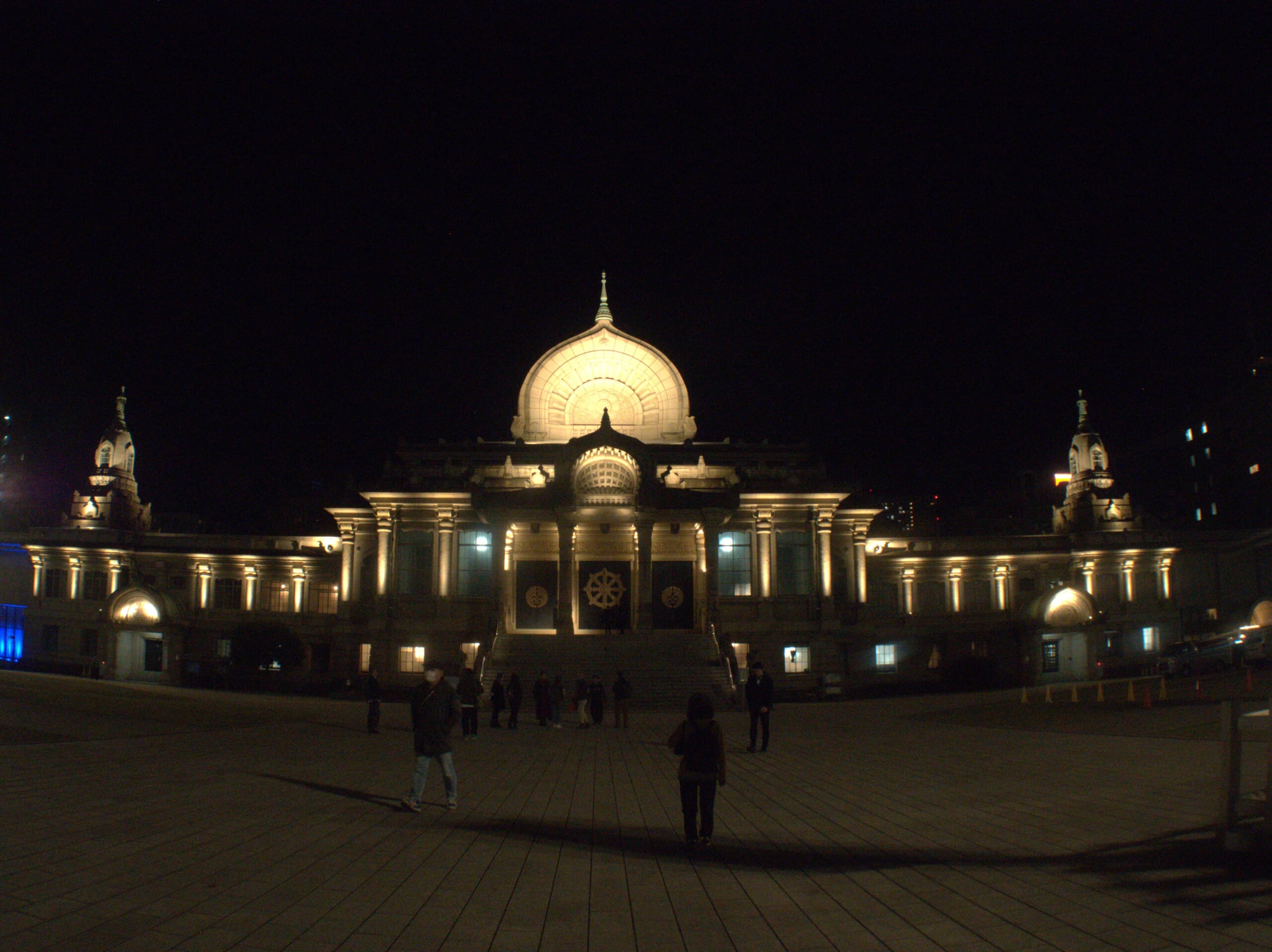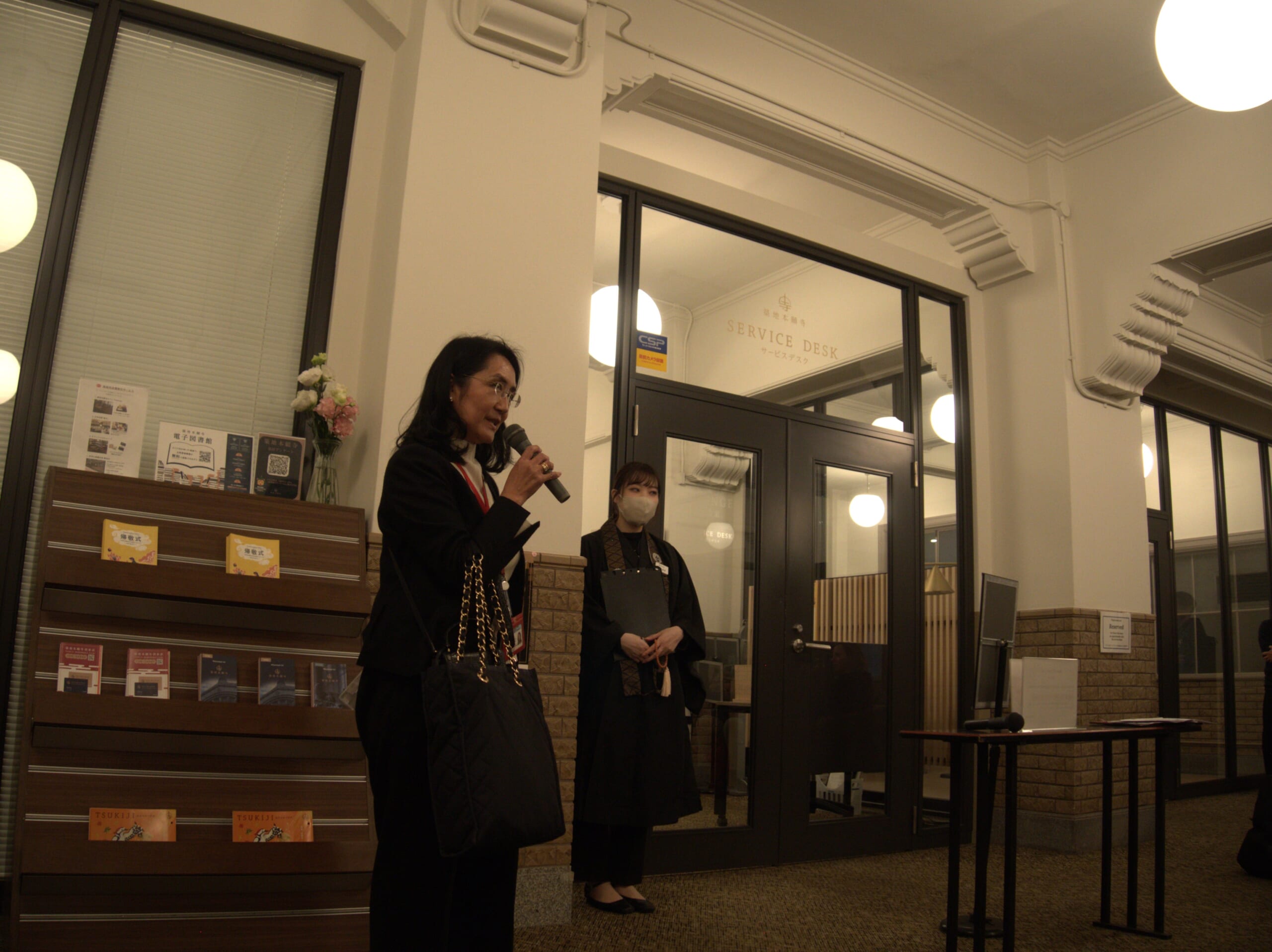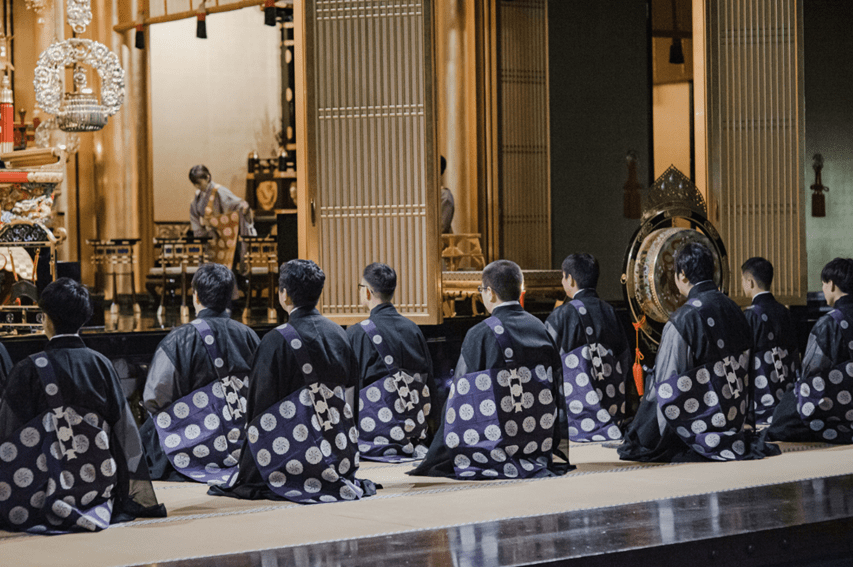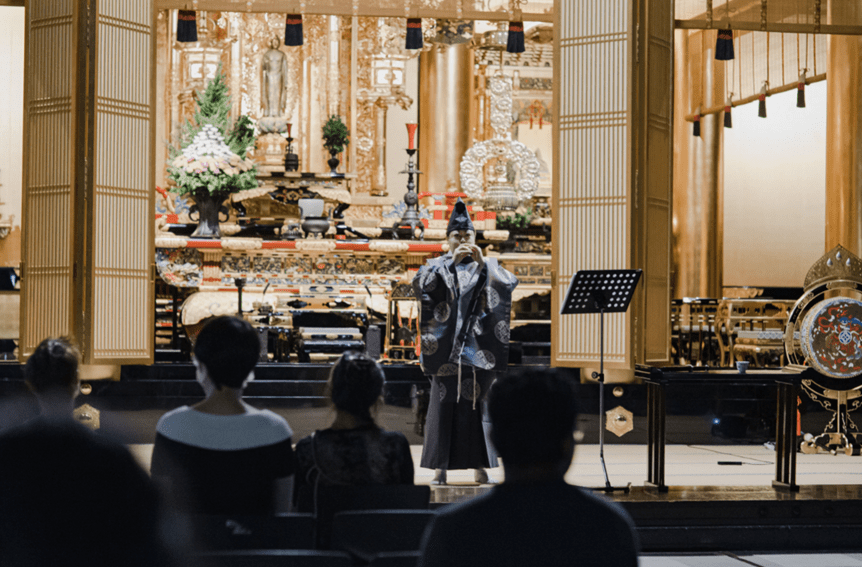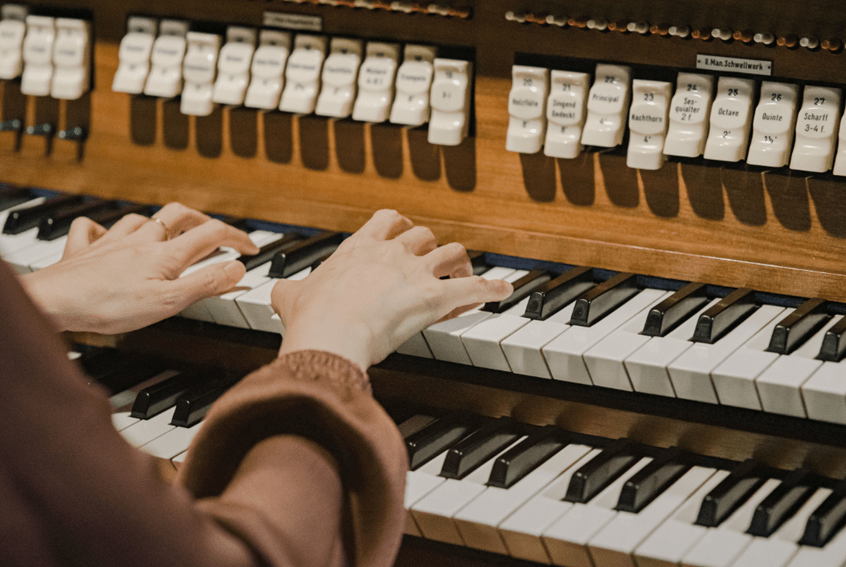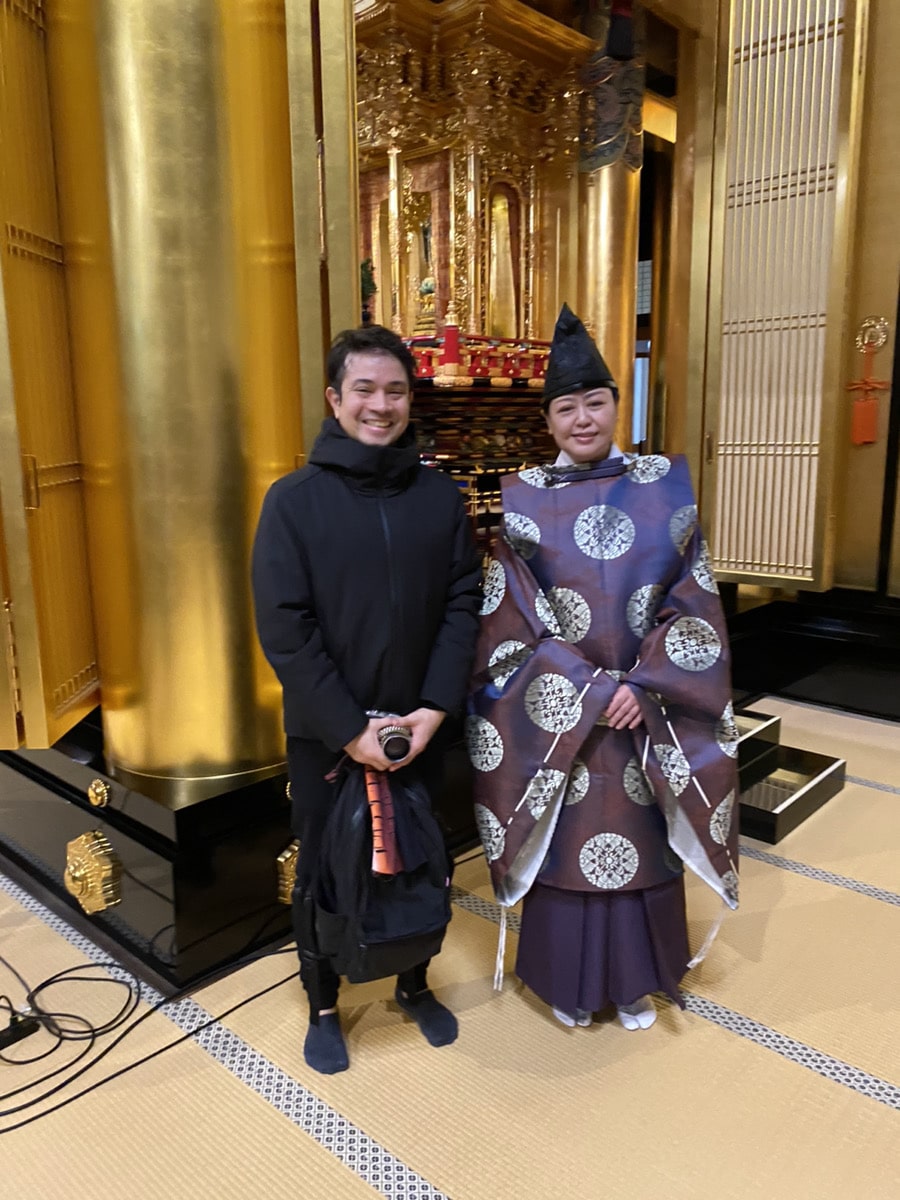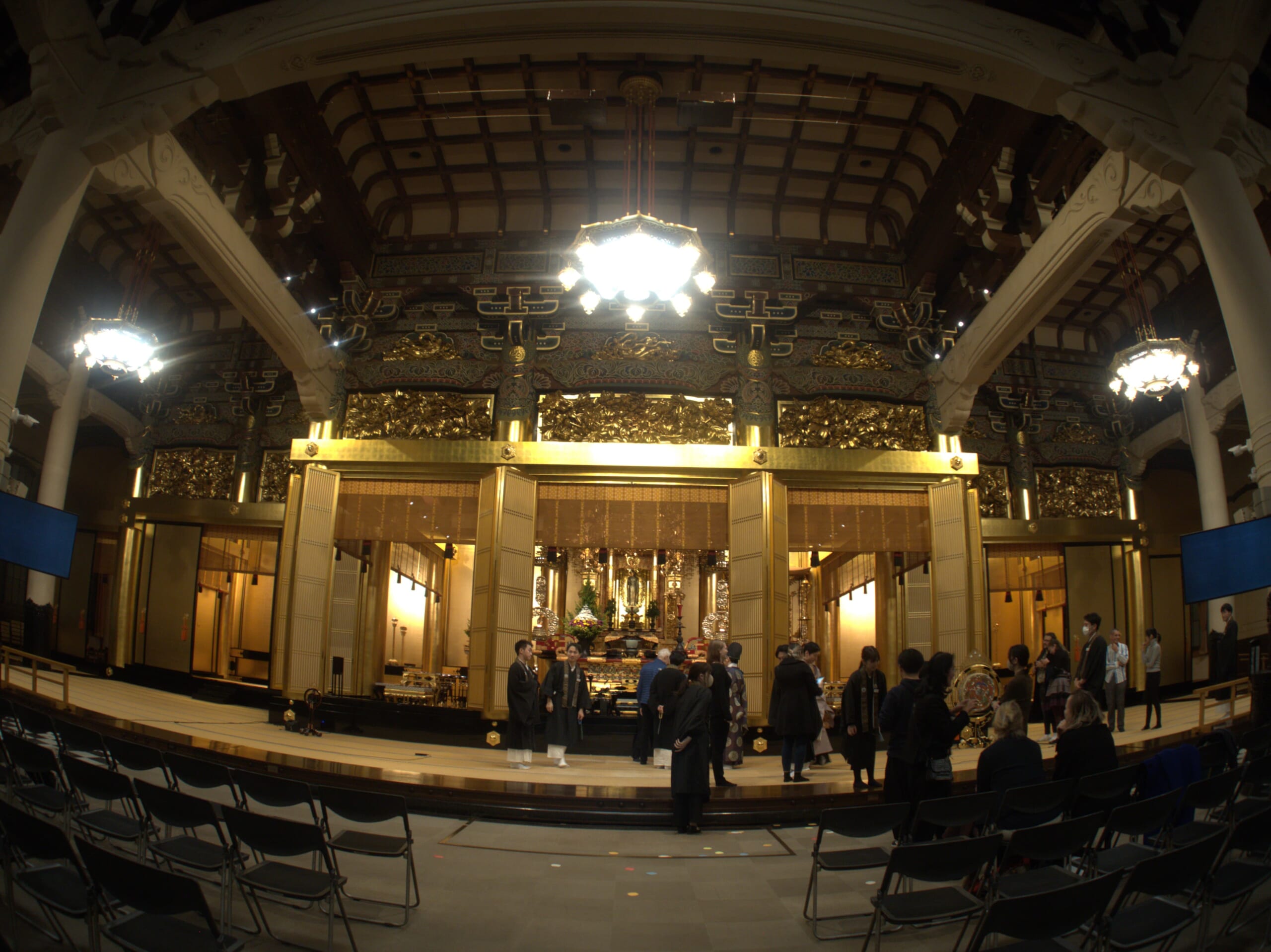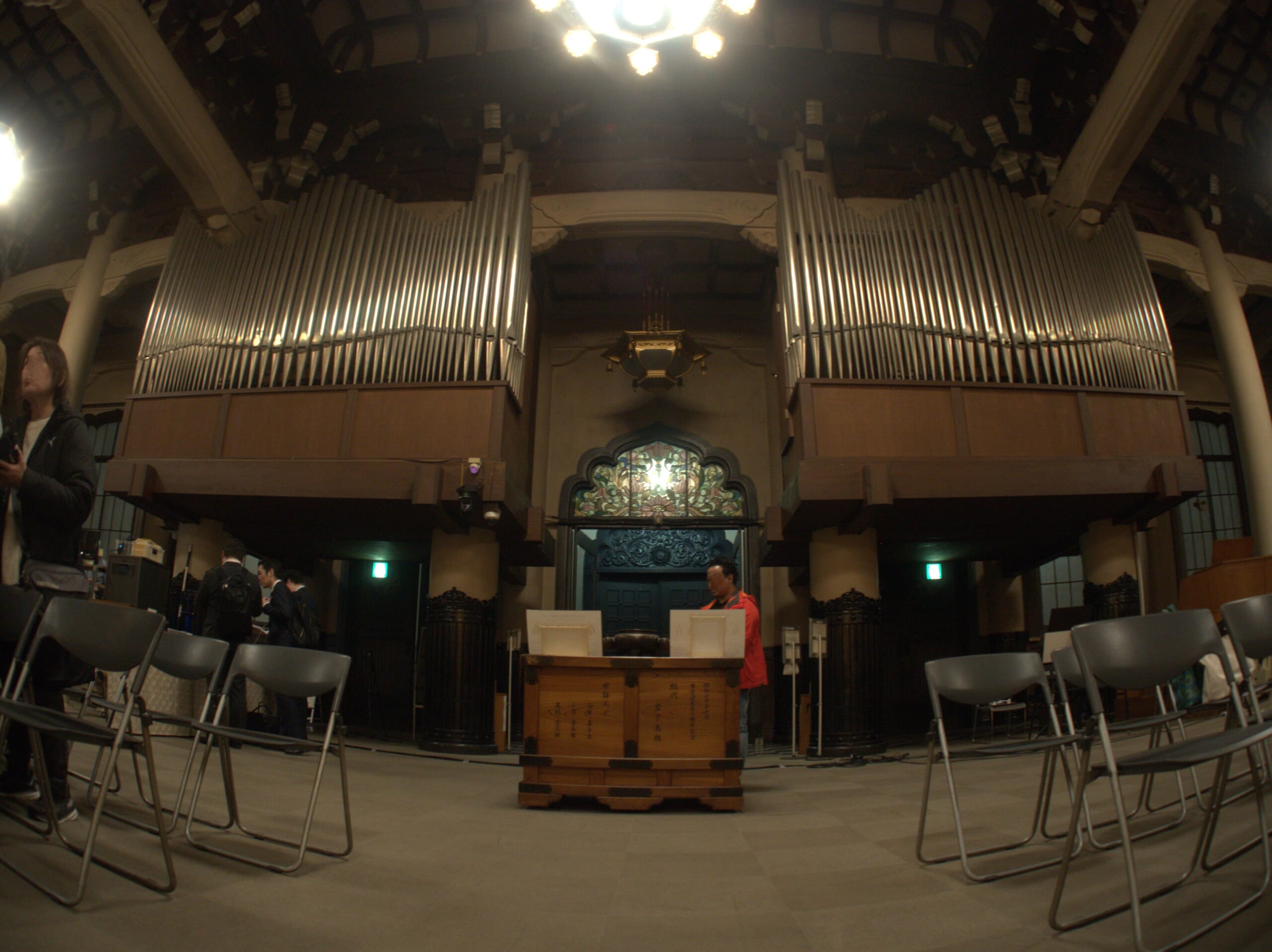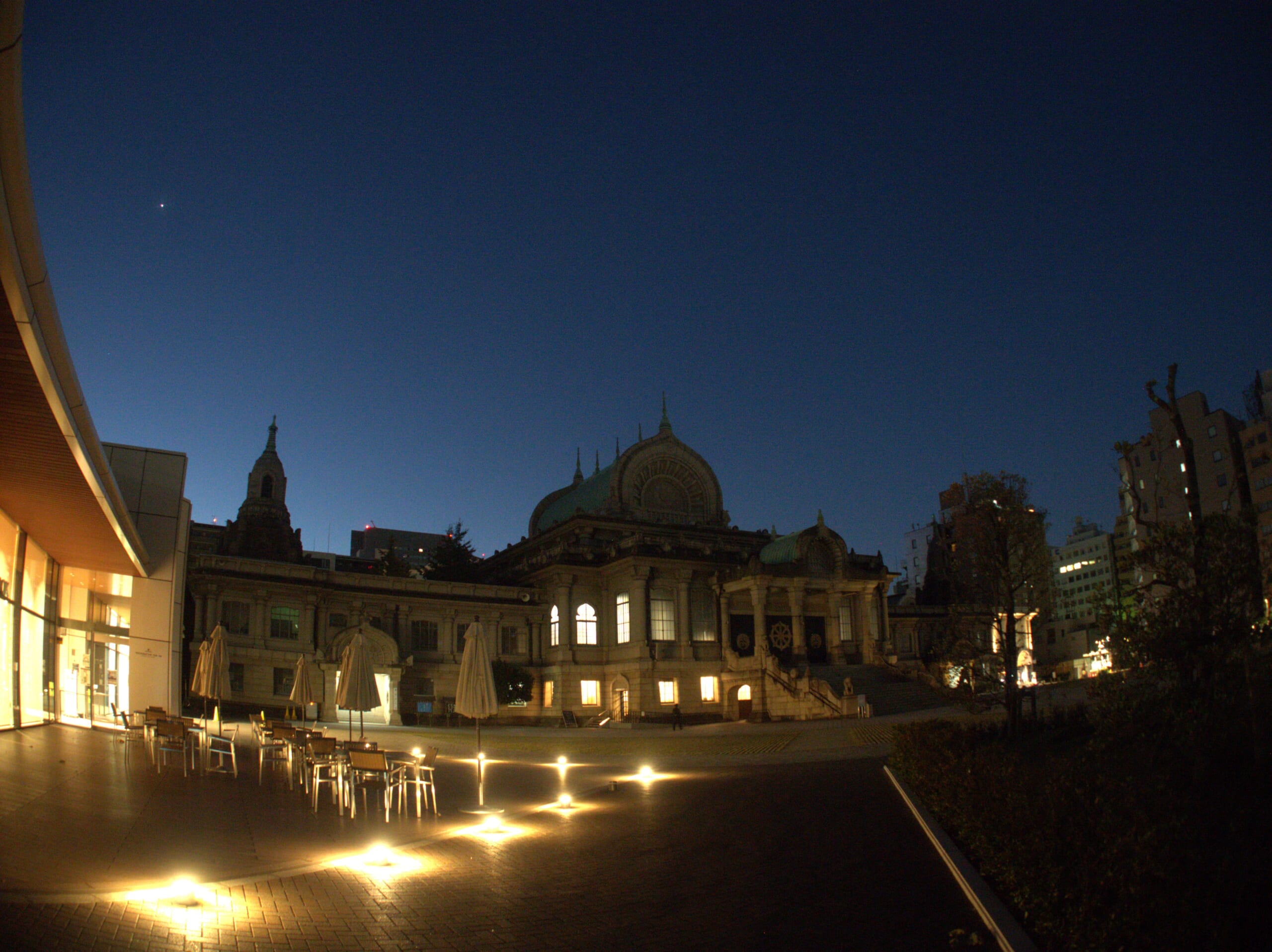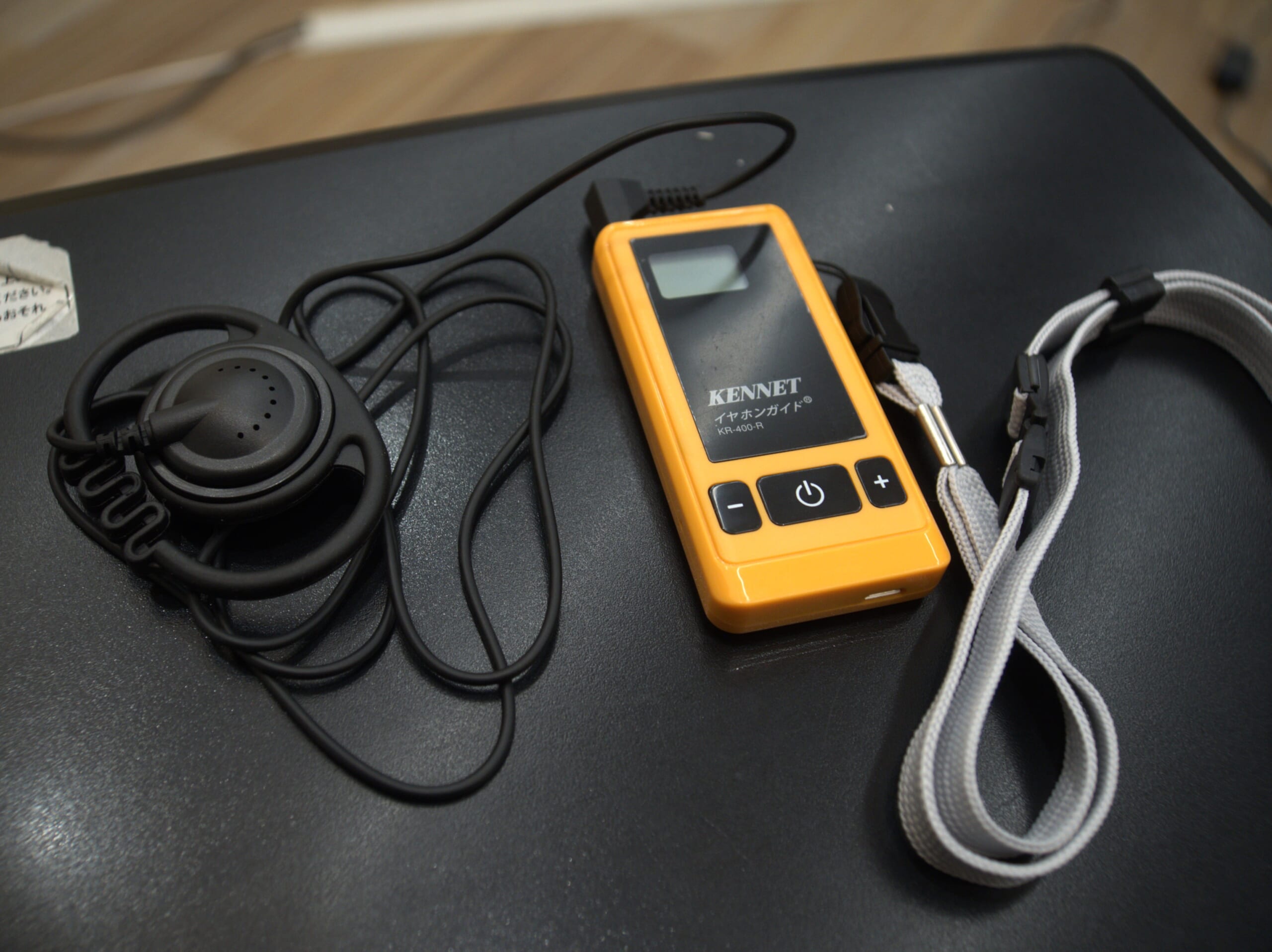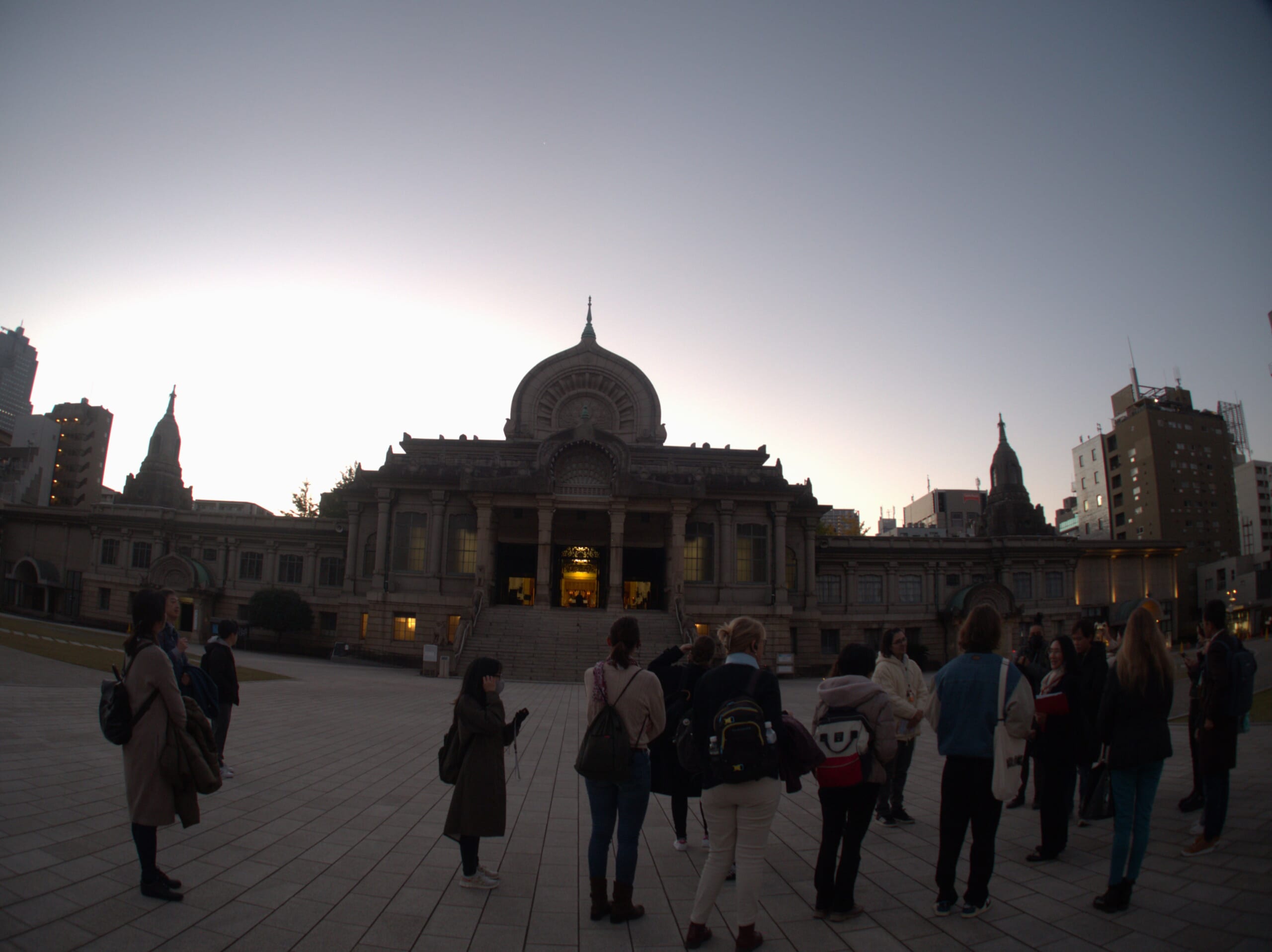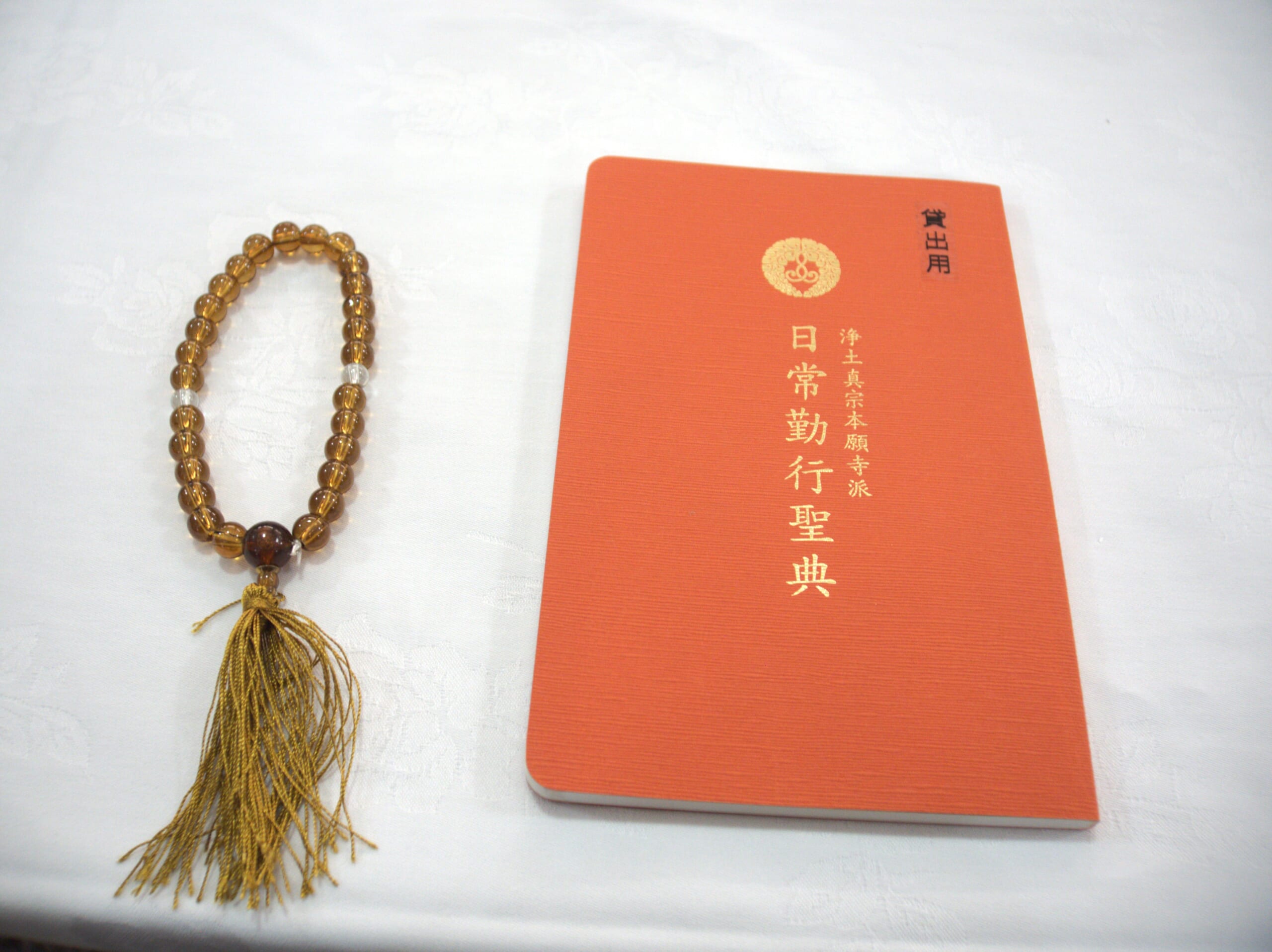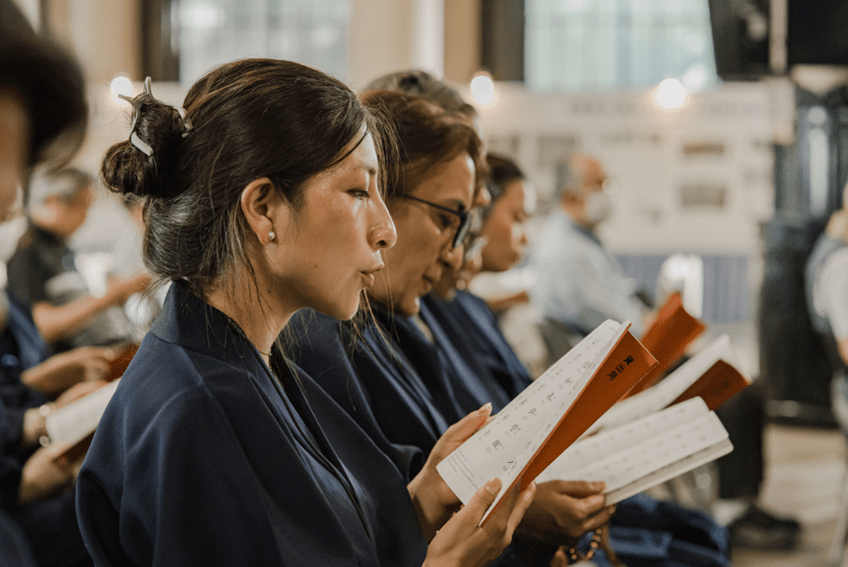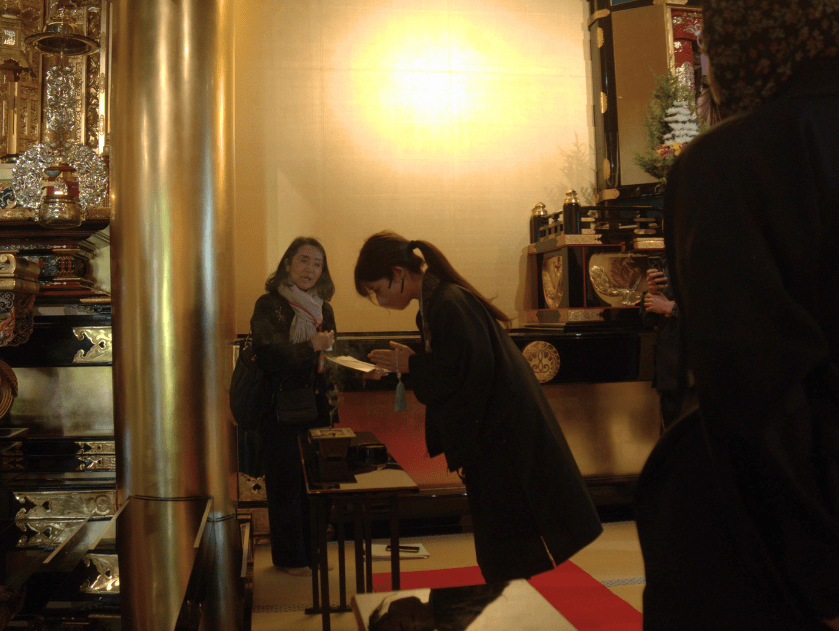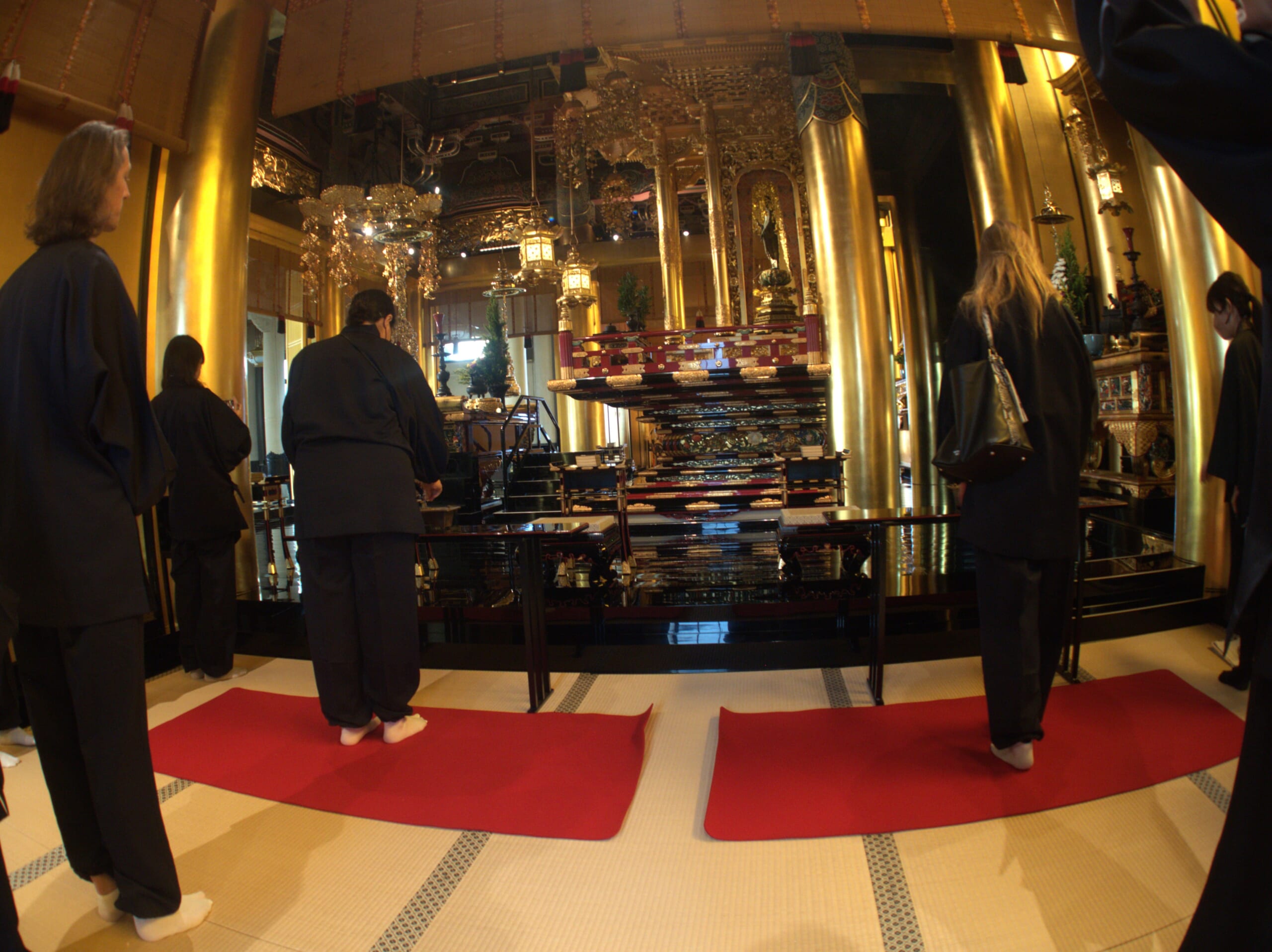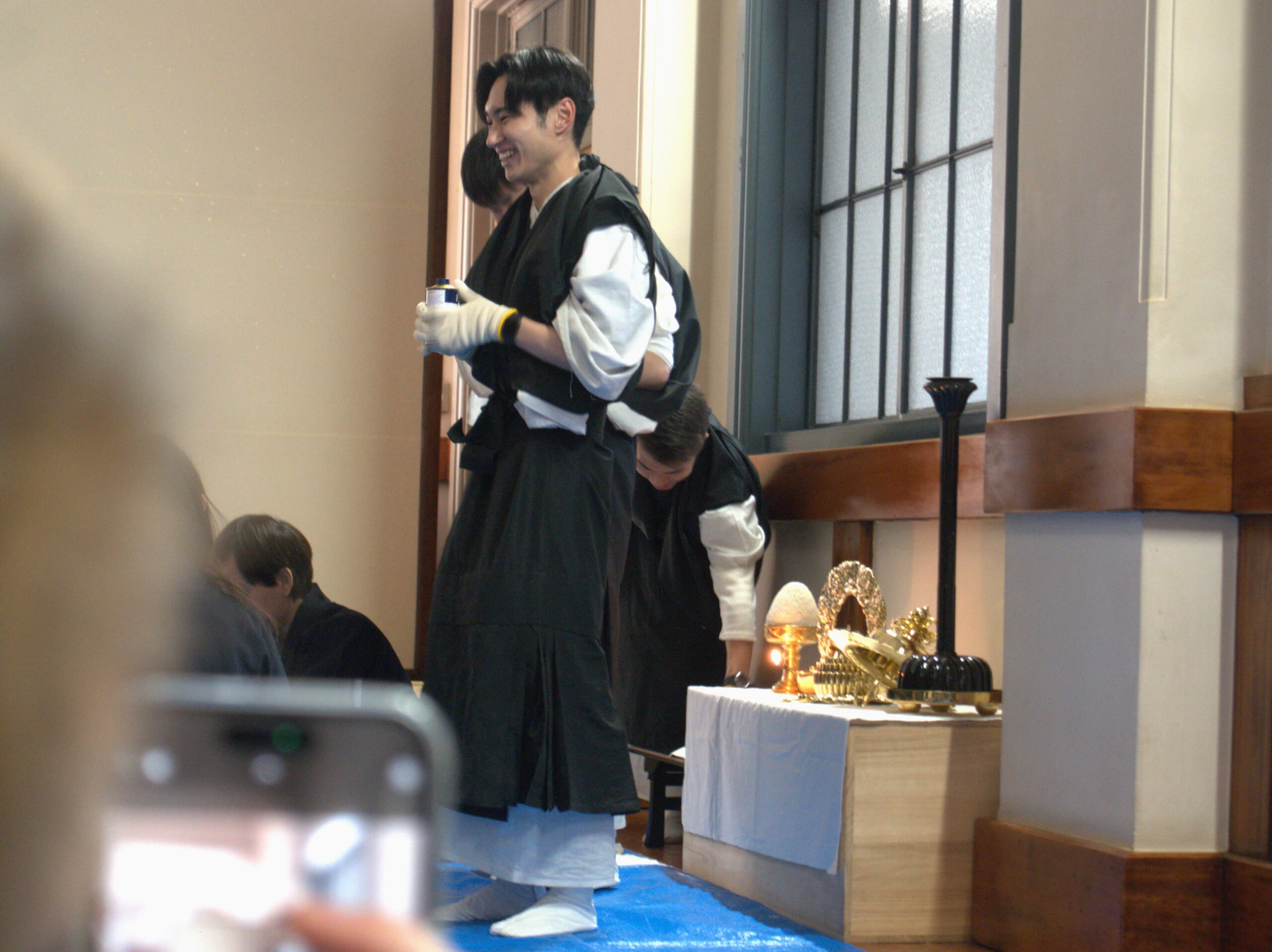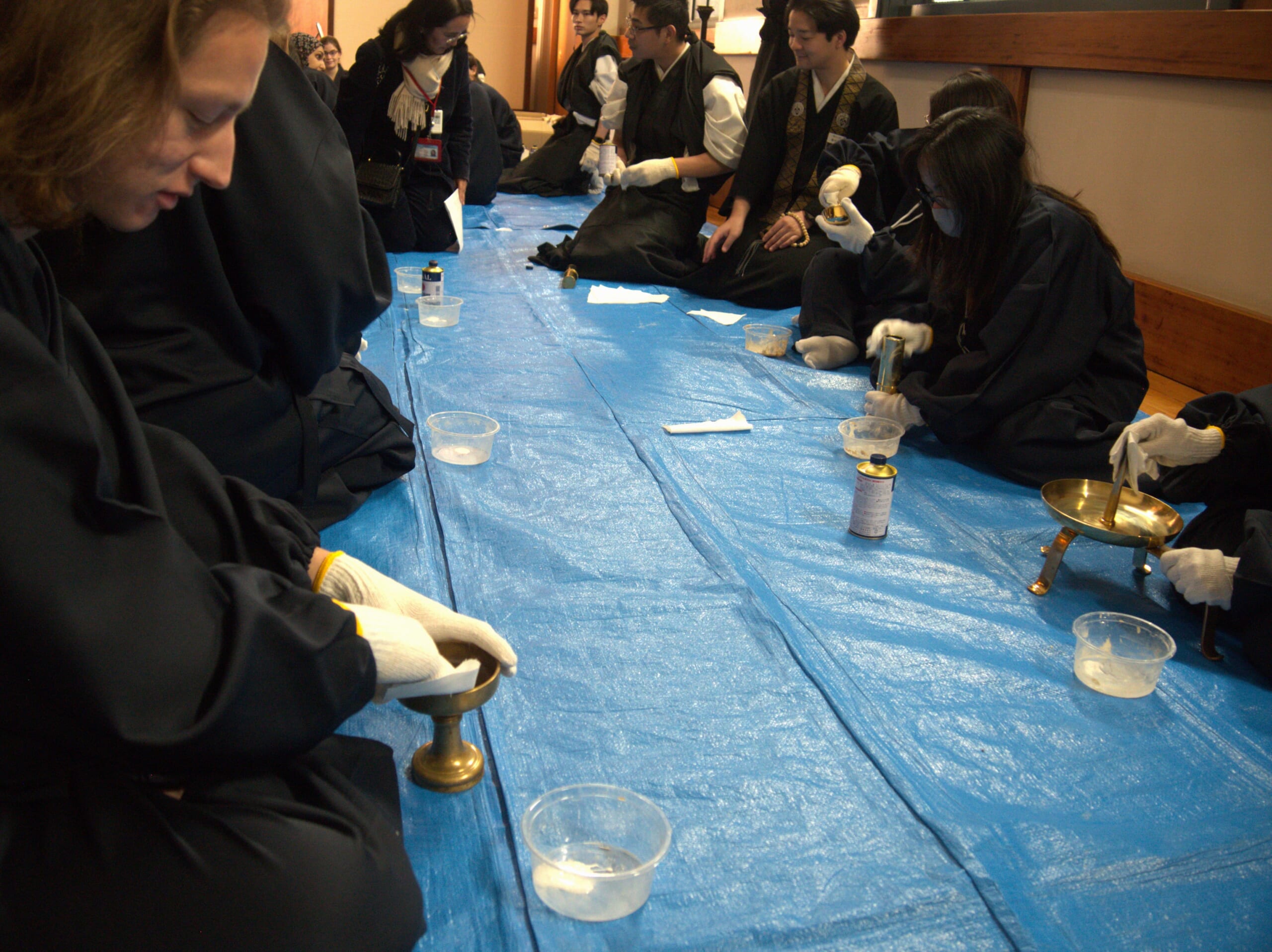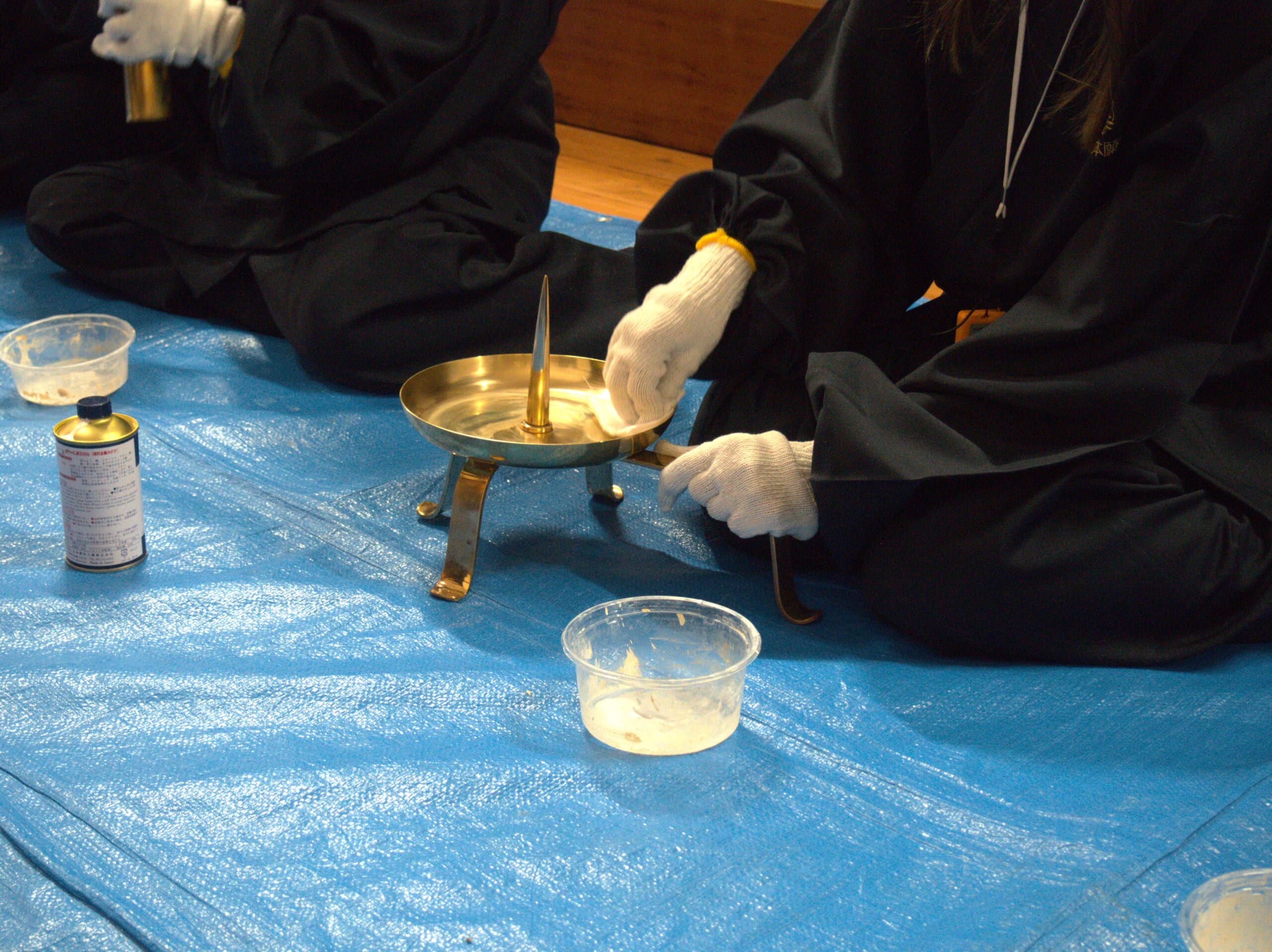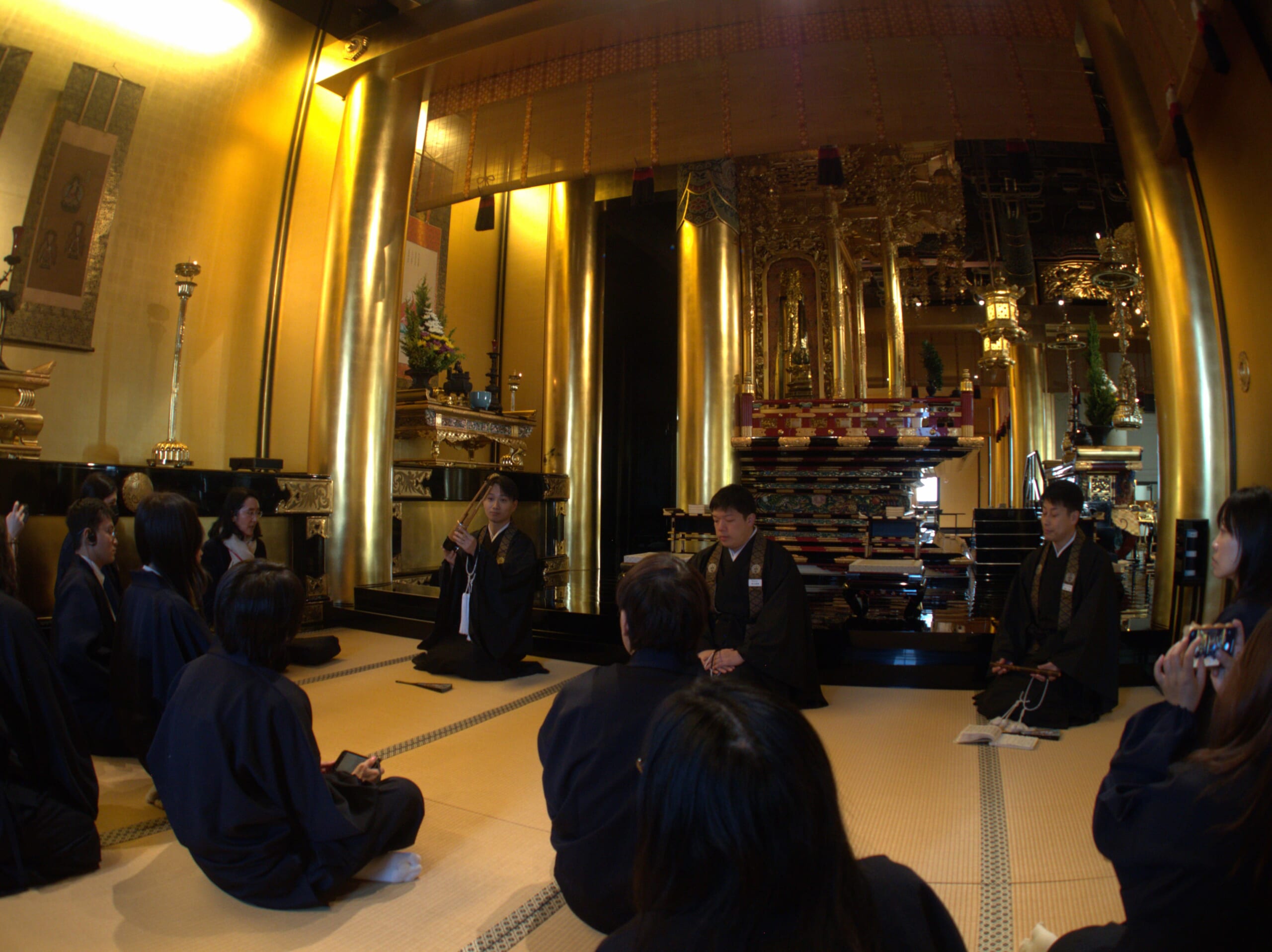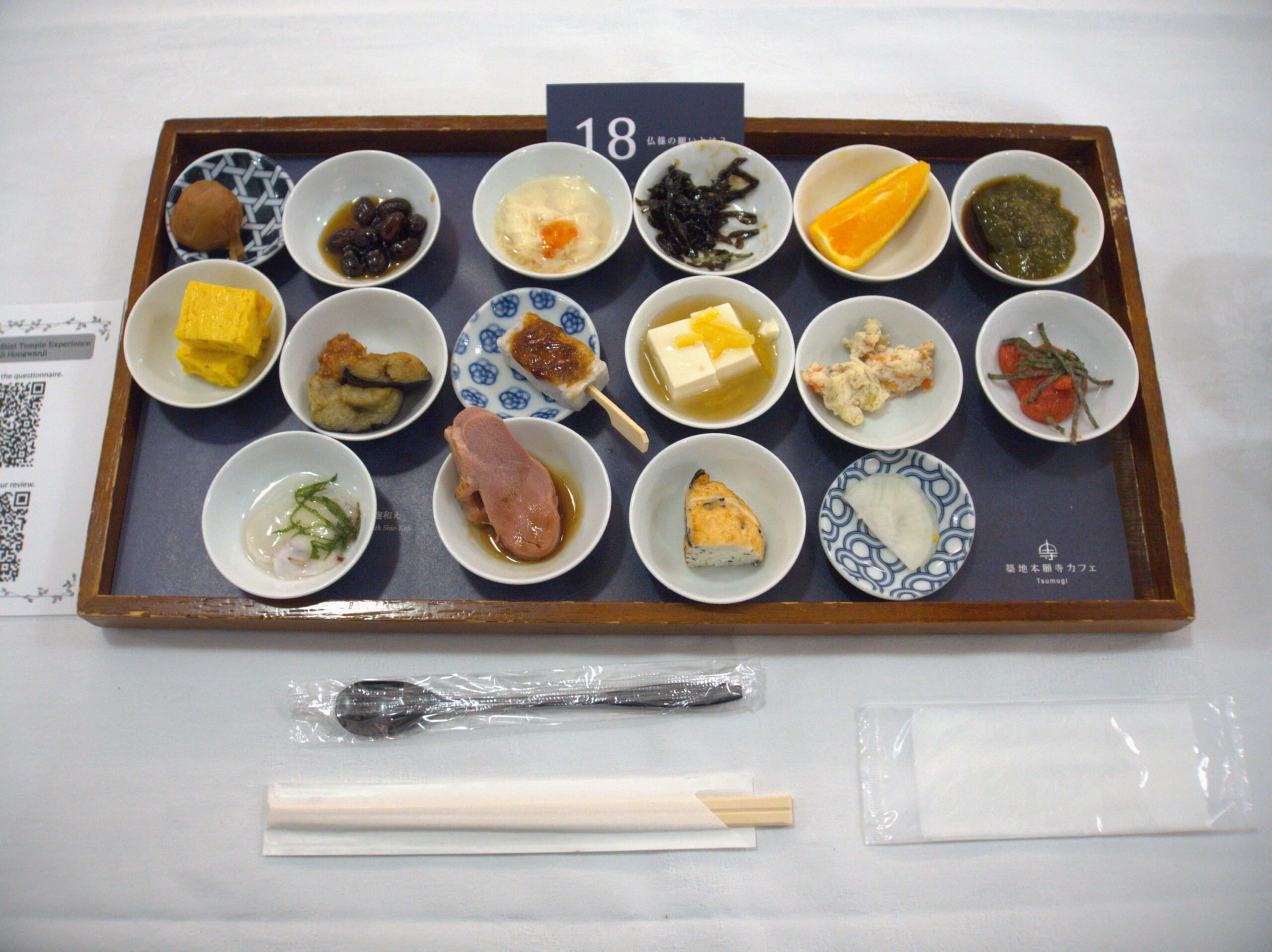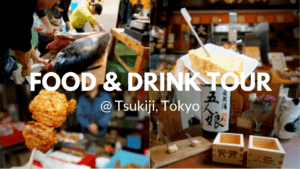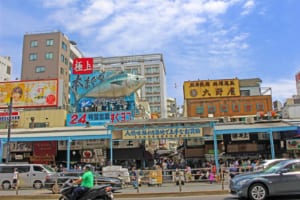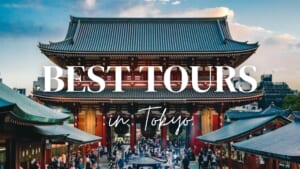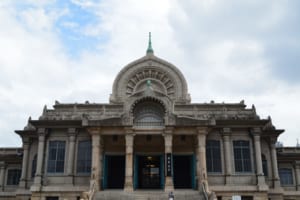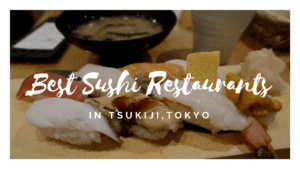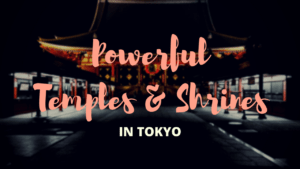Tsukiji Hongwanji Temple Tours: Night Concert & Early Morning Temple Experience
My Experiences at Two Unique Tsukiji Hongwanji Temple Tours
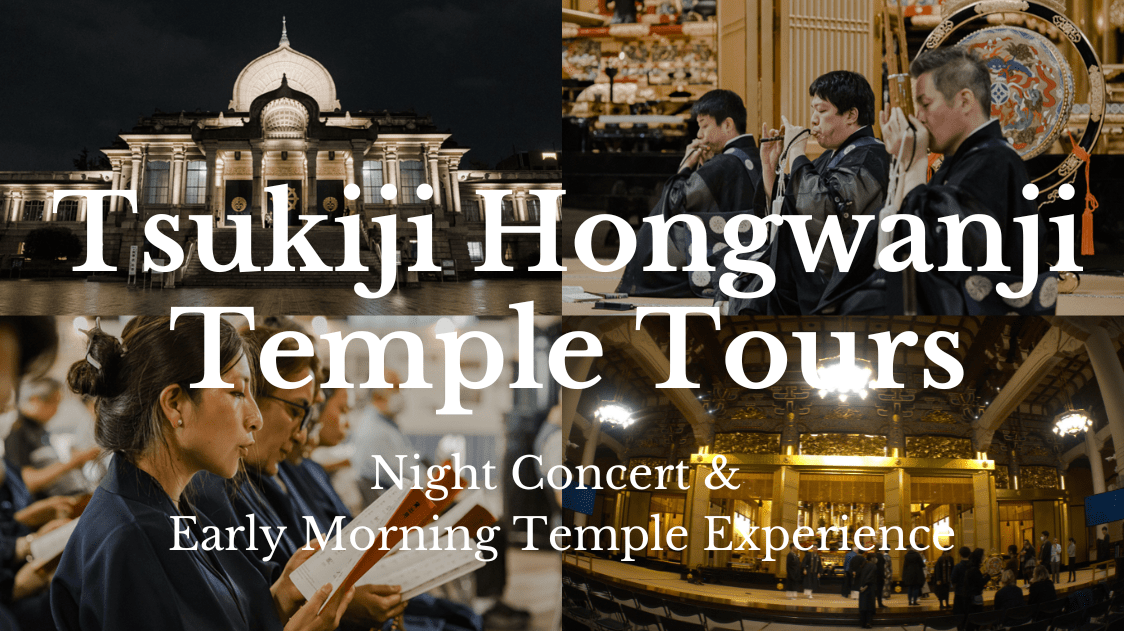
Tsukiji is a popular town in Tokyo among international visitors, mainly because of the fish market. Even though the main fish market was relocated to Toyosu, you can still see a vibrant market with lots of visitors, both local and international.
Another highly popular reason for people to visit this town is the fact that it has one of the most important Buddhist Temples in Japan. Tsukiji Hongwanji Temple is a temple that is deeply rooted in this town. This temple is not only a landmark but is rich in history and has a cultural and architectural importance that should be more known.
This amazing temple now offers two types of tours that offer a unique experience for those who are interested in this temple and Japanese culture in general. I had the opportunity to participate in both of these tours, so I will share my experience in this article! Hopefully, I can spark an interest in you.
*Please note that this article contains affiliate links.
What is Tsukiji Hongwanji Temple?
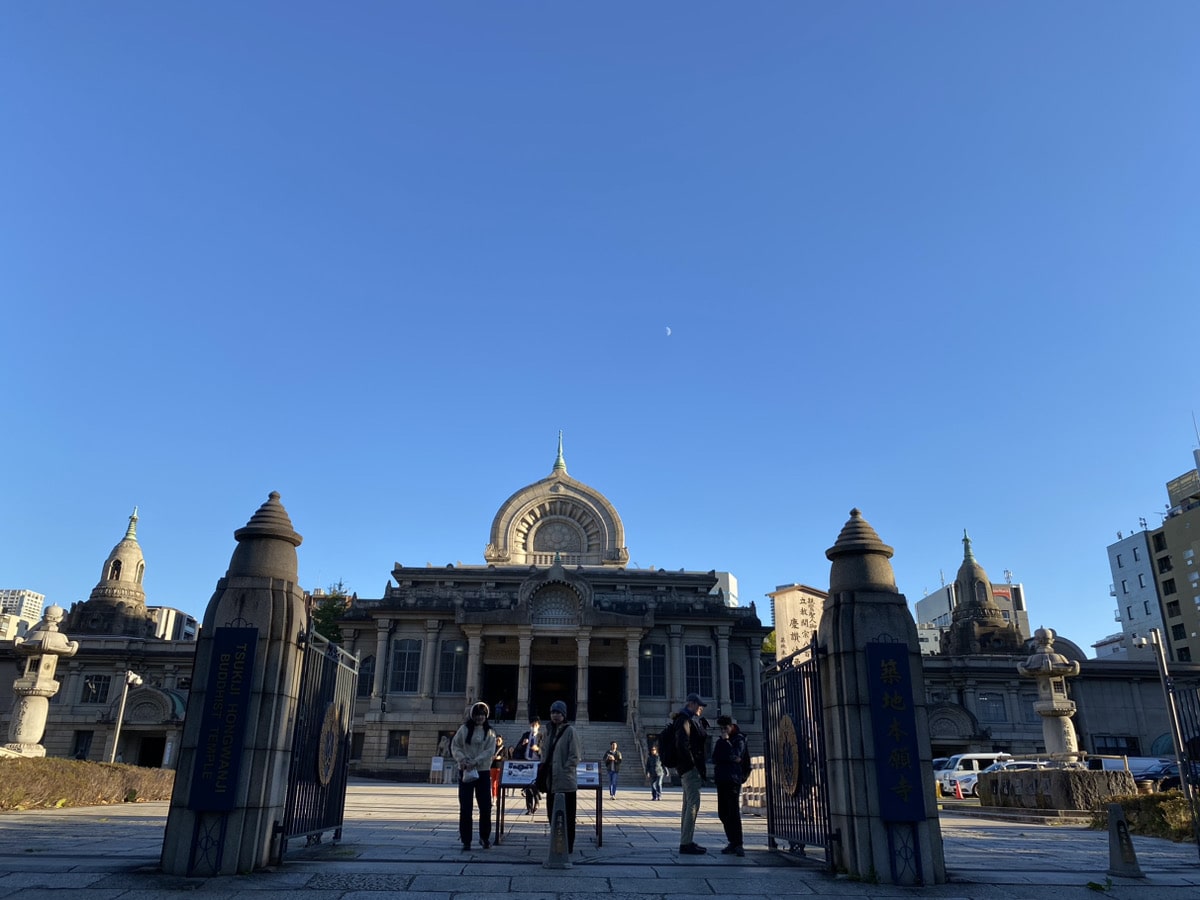
Unlike typical Japanese temples, it showcases an intriguing blend of traditional Buddhist architecture with distinct Indian and Western influences, making it stand out in Tokyo’s cityscape. This architectural uniqueness and its rich history mark it as an important cultural and religious site.
Foreign travelers should consider visiting Tsukiji Hongwanji Temple to admire its unusual design and to experience a serene atmosphere amidst the bustling city, offering a glimpse into Japan’s multifaceted religious and cultural heritage.
My Experiences at Two Unique Tsukiji Hongwanji Temple Tours
As I previously mentioned, I had the opportunity to take part in two unique tours that take place at Tsukiji Hongwanji Temple.
These tours are called “Premium Night Concert at Tsukiji Hongwanji Temple” and “Early Morning Buddhist Temple Experience at Tsukiji Hongwanji”. As the name of the tours suggests, the first one takes place at night while the other one starts early in the morning.
From here, let me share with you my experience with both of these tours.
Tour 1: Premium Night Concert at Tsukiji Hongwanji Temple
The first tour I got to be part of was the “Premium Night Concert” which consists of a night concert where you can experience the traditional Japanese Gagaku music. You will learn not only about the temple and its history but also about Gagaku and the instruments used for Gagaku.
Meet up at the Temple
This tour started at 7 pm. The instructions were to be in front of the temple at 6:45 pm so that the tour could start swiftly at 7 pm sharp.
Tsukiji Hongwanji Temple is located right next to ”Exit 1” of Tsukiji Station (Tokyo Metro Hibiya Line). This makes it easy to access. It is also close to the fish market and all the shops and restaurants, so you can either go there directly from the train station or go there after having walked around the market.
Since most people visit Tsukiji in the morning, seeing the temple illuminated may surprise you. It is a stunning structure that has a very different expression from night to day.
Orientation before the Concert
At 6:45 pm, they guided us in the temple, to the waiting room on the basement floor. And at 7 pm, the orientation began. Our tour guide briefly explained about the temple as well as the concert schedule.
After the orientation, we were guided to the temple’s main hall where the concert takes place. Here, a video was shown with a more detailed explanation of the temple (its history as well as architectural/cultural importance) as well as an explanation of the musical instruments and the music that was going to be performed.
The Concert
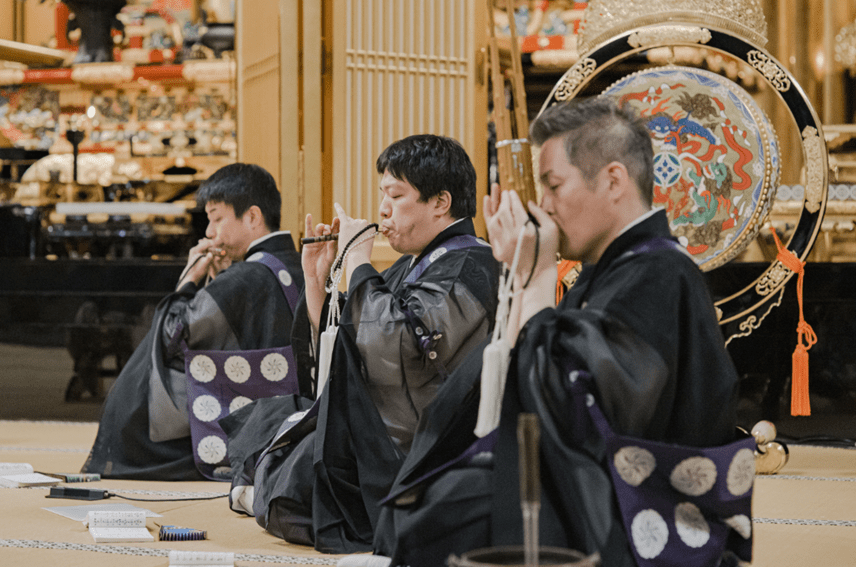
The first live performance was a Gagaku (雅楽) performance. Gagaku is a traditional form of Japanese classical music that has been performed at the imperial court for centuries. It’s known for its serene and ethereal sounds, often described as otherworldly. Since we got to listen to the explanation of the music as well as the instruments, we could appreciate the music in a deeper manner as opposed to listening without knowing the meaning of the music.
Next, there was a musical service performed by a larger group which was a surreal experience composed by the soothing music complemented by the great acoustics of the beautiful main hall.
Then there was a performance of the Pipe organ which has an interesting history of its own. After the Pipe organ performance, there was a duet between the pipe organ and the Hichiriki (Gagaku instrument). This was an especially interesting duet that people wouldn’t think would match, but it did beautifully.
After the Concert
After the concert concluded, there was time for us tour participants to take pictures with the musical performers (who also happen to be the Buddhist priests of the temple). We were allowed to get on the stage which is usually not allowed. This was a nice addition to the tour not only because we got to take pictures with the priests, but also because we got to interact with them, which is something you can’t do usually.
After taking pictures and talking with the priests and the other tour participants, the tour was over. The whole tour takes about 2 hours (from 7 pm to 9 pm).
My Thoughts
I thought this was a highly unique experience that is worth it if you love Japanese culture (especially traditional music). You don’t only get to enjoy Gagaku music, but also get to listen to the explanation about the instruments and the music itself. You also get to experience this concert in one of the most important Buddhist temples in Japan.
Nighttime tours in Tokyo usually include food and drinking, which is good. But for those looking for something different, this is a great option you should consider.
You can learn more about this tour by clicking on the following link!
<<Book Online: Premium Night Concert at Tsukiji Hongwanji Temple!>>
Tour 2: Early Morning Buddhist Temple Experience at Tsukiji Hongwanji
The second tour I got to be part of was the “Early Morning Buddhist Temple Experience” which consists of experiencing the Buddhist temple’s morning ritual as well as an explanation of these rituals. The experience includes changing into a Buddhist traditional garment, participating in the Buddhist morning ceremony, polishing the golden instruments used in the morning ceremony, and having breakfast.
Meet up and Orientation before the Tour
This tour started at 6 am. Similarly to the night concert tour, we gathered 15 minutes before so that the tour could start swiftly. However, this time, instead of gathering in front of the temple, we united in the building located on the right side of the temple. The temple at 5:45 am is also beautiful. It is not illuminated on the outside, but you can start to see the sun rising, which feels good.
After we all gathered, our tour guide provided us with earpieces so that she could translate in real-time during the morning ceremony. Then, she briefly explained the schedule for this tour as well as the things we need to be cautious about. We are about to head to a Buddhist temple, so it is important to know how to be respectful during this experience.
After we were all informed about how things were going to proceed, we headed to the front of the temple outside. Here, our guide explained in detail the history of the temple as well as its importance, culturally and architecturally. At this point, the sun was out and we were able to contemplate the architectural beauty of the temple.
Morning Ceremony
Once we went inside the temple, we were guided to the changing room where we changed clothes. They had prepared a traditional Buddhist garment for us to change. After changing, we gathered in a waiting room where they gave each of us a Nenju (念珠) which are prayer beads you hold on your left hand during the morning ceremony. They also provided us with a booklet with the morning chants indicated.
They explained how to hold the Nenju as well as how to handle the booklet. After the explanation, we were guided to the main hall where the morning ceremony was about to begin.
During the morning ceremony, we all had our earpiece on and our tour guide would let us know when to turn the page of the booklet. The booklet they provided us with had English subtitles which made the ceremony that much more interesting to be part of. The ceremony consisted of chanting followed by a sermon given by a guest priest.
Tour Back side of the Main Hall
After the morning ceremony was finished, we proceeded to the back side of the main hall, which is an area where people are usually not allowed to go in. We were guided to the room located right next to the stage of the main hall. Here, they explained to us how to oshoko (offer incense).
Then we were guided to an area where we learned how to polish the golden instruments used for Buddhist ceremonies. This was a unique experience since regular people are usually not allowed to handle these instruments. The instruments included cups, candle holders, and even some artifacts we were not sure what they were.
One of the priests who was fluid in English taught us how to polish the artifacts properly, and then they provided all of us (tour participants) with a piece of cloth, polishing cream, and a golden artifact to polish. At first, we weren’t very sure how to do it, but as we started polishing and noticed how shiny the artifacts were becoming, it started to become a pleasant experience. All of a sudden, we were all concentrated on trying to make our artifact as shiny as possible!
Gagaku Performance
After the polishing experience, we proceeded to another room. In this room, three priests were waiting for us with Gagaku instruments. They explained what the instruments were, and what they represent, and played a song for us. After the musical performance, we did a Q & A session where we got to ask them about their instruments and their duties as priests.
Breakfast
Then lastly, we came back to the waiting room where an attractive and colorful breakfast was waiting for us. This is an elaborate 18-dish breakfast from a popular restaurant that is closely associated with the temple. One thing I thought was clever, is that when you lifted a plate, the content of the plate would be indicated right under it. I thought it was a fun way to learn Japanese dishes.
Although it first seemed like a lot of food, it was delicious, and ate it all up easily. This time is also when we were able to talk and get to know the other tour participants. It was a nice time to get to know each other.
After this, we went to the changing room to change back into our clothing, and that’s where this tour ended. The tour ended at around 9:30 am. When we headed outside, we could see the town of Tsukiji completely awakened and full of tourists coming to the temple or heading to the market.
My Thoughts
This tour is a must experience in my opinion. All the activities that I got to experience during this tour were not only unique but were activities that you would never have the chance to experience any other way. Not only did we experience these activities, but we were guided and educated just enough to have an idea of how things work during a Buddhist morning ceremony.
Another attractive point about this tour is that when you finish, it is still just 9:30 am! You can head straight to the fish market and enjoy the rest of the morning at Tsukiji.
You can learn more about this tour by clicking on the following link!
<<Book Online: Early Morning Buddhist Temple Experience at Tsukiji Hongwanji>>
I hope you enjoyed this article! Both of these experiences were unique in their way and I would recommend it for anyone! Although Tsukiji is an important town in Tokyo, most tours involve the fish market, but not the Tsukiji Hongwanji Temple. This is a great opportunity to not only get to know this fascinating temple but also learn and fist-hand experience Japanese culture.
▽Subscribe to our free news magazine!▽
For information about tours and other things to do in Tsukiji, check these articles below, too!
▽Related Articles▽
▼Editor’s Picks▼
Written by
Born and raised in Costa Rica, I started living in Tokyo from college. I love traveling within Japan & around the world. Since I wasn’t born in Japan, I know the cultural impact that you can get when visiting Japan for the first time and what you might be worried about before your trip. And I’ve lived long enough to somewhat understand the nuances of the Japanese culture that make this country such an attractive place to visit. Hopefully I can provide to you both the information you’re looking for and the information you didn’t know you needed to know.
